EASTERN EGG ROCK — Stephen Kress pulled his boat away from the rocky island and slowly motored toward the cluster of seabirds with the orange and red bills.
One of his guests remarked how wonderful it was to see people on a nearby sailboat photographing the puffins – even if they didn’t know the story of the bird’s recovery in Maine.

Kress disagreed.
“They don’t know the human story,” said Kress, executive director of Audubon Project Puffin. “If the human intervention was taken away the puffins would go away.”
Since 1973, Kress has been behind the effort to restore puffins to their historic nesting islands in the Gulf of Maine. The backbone of his project are island stewards – interns who protect the birds and their nesting sites from predators and who gather meticulous data about puffins and their feeding habits.
The role of these interns has become more critical in the past decade, as rapid warming in the Gulf of Maine has taken a toll on the food chain that puffins and their chicks depend on. Since 2004, the Gulf of Maine has warmed faster than anyplace else on the planet save an area northeast of Japan.
“The data is telling us what kind of fish are abundant and the time of their arrival,” said Kress, 72. “So today there is new value in having the island interns.”
Since the mid-1970s, more than 550 interns have spent summers on the treeless Eastern Egg Rock and two other remote islands off the coast of Maine. These island stewards, mostly college students or recent graduates, live in tents for 10 weeks from June to August during the puffins’ breeding season. For many, the internship was life-changing.
“That field experience was so enriching,” said Kevin Bell, who worked on Eastern Egg Rock in 1975 and is now CEO of Chicago’s Lincoln Park Zoo. “It shaped what is important to me, the kind of thing I wanted to see an institution do, and what experience I’d like other people to have, and the kind of places I want to see exist for future generations.”
Eastern Egg Rock is located 5 miles off New Harbor on Maine’s midcoast, and it’s at the southern limit of puffin habitat in North America. As with the other Project Puffin sites – Seal Island National Wildlife Refuge and Matinicus Rock in Penobscot Bay – the 7-acre Eastern Egg Rock is closed to the public during the puffins’ nesting season, leaving the four to five interns on each island with little human contact.
Kress selects the island stewards – or Puffineers, as he calls them – through a competitive application process with as many as 200 applicants vying for 23 positions. The interns get stipends, and the positions are paid for through donors who sponsor an intern at a cost of $7,000 for a steward and $10,000 for a supervisor.
“We’re very clear on the applications about the isolation factor,” Kress said. “We’re very careful in selecting candidates. You put the wrong person on an island, it could go badly. It’s always a gamble. But all of them share a passion for birds.”
The long-term data sets collected by the island stewards have helped to show trends in climate change. With more than 30 years of data on the puffins’ diet, the data show changes emerging in forage fish populations. For example, haddock was not part of the Maine puffins’ diet before 2010. In 2017, haddock accounted for 14 percent of the food fed to puffin chicks at Seal Rock and 6 percent at Eastern Egg Rock.
“It’s proven a climate indicator,” Kress said of the data collected by the interns. “NOAA is looking at it.”
The puffin population has rebounded since 2012, when the warmest ocean surface temperatures ever recorded in the Gulf of Maine occurred. That year there were barely over 100 breeding puffin pairs on Eastern Egg Rock. Last year, there were a record 172 breeding pairs – aided in large part by surface temperatures that were cooler by a half-degree Centigrade from the year before.
‘I LOVE SEARCHING FOR NESTS’
One recent morning on Eastern Egg Rock, island steward supervisor Laura Brazier laughed out loud when asked the most challenging part of her job.
“I feel like just surviving is an achievement,” said Brazier, in her fourth year with Project Puffin.
The four interns here – this year all young women – live in tents in front of the small cabin that serves as a communal space. The “Egg Rock Hilton,” as it’s known, is surrounded by a few trails and sparse vegetation. One main trail leads to 11 primitive, wooden bird blinds.
But everything about the place is primitive.
Food and water are brought to the island about every two weeks by Kress or an Audubon staff member in Bremen. But the stewards who choose to be here love the island.
Nicole Faber came to work here in 2016 after graduating from Bowdoin, and this is her third summer working for Project Puffin.
“I love being out here and I want to expand my field experience,” said Faber, a resident of Brookline, Massachusetts. “I don’t know what I want to do. But doing this work makes me happy. I was an English major. But when I look around and think of things I care about, I think of nature.”
Faber said at the end of the summer coming off the island is a culture shock, and the memory of the island lingers.
“It’s incredible to live at the pace of another species,” she said. “We’re following the birds and what they do. It’s not something you normally do in life. There are so many things we are shut off from, but we have to respond to the birds. It’s a good thing. You have to be OK sitting with yourself in your own brain.”

Laura Brazier carries a common tern that she trapped before banding it on Eastern Egg Rock.
The stewards work 10- and 11-hour days, sometimes in the hot sun on an island with no shade, sometimes for weeks without a day off. Most days they spend three-hour stints sitting in blinds recording minute details about the puffins and their behavior around as many as 266 burrows, which are numbered.
“We have weather days,” said Brazier, a Boston native. “When it’s raining and the birds are not out and we can’t go outside, then we have a day off. So it evens out.
“I love searching for nests. It’s so satisfying if you find one, but it can be soul-crushing if you don’t.”
Brazier had great success this spring eradicating the island of gulls.
Willing stewards are asked to shoot sea gulls to minimize the predation on puffins and terns, but they are not required to do so. Brazier came up with a more effective idea. She took several dead sea gulls and strung them up on stakes. The result: few to no gulls swarm around Eastern Egg Rock now, so the puffins and nesting terns are safe from a predator in search of eggs.
Last summer an island-wide census tallied 1,700 gull nests. This spring the stewards found only one gull nest.

Laura Brazier cradles a common tern while banding it on Eastern Egg Rock. The project has grown to include other Maine seabirds.
“I feel the gulls was a huge thing to be a part of. It was definitely a group effort,” Brazier said. “It was so loud with the gulls before – they were everywhere.”
Brazier majored in biology in college, but wasn’t sure where it would take her. Now she is considering becoming an environmental educator.
“The problem is the science stays within the scientific community,” Brazier said. “I just feel so much more could be done to educate the public. They don’t read the science journals. I feels this is really good work to be involved in. And the work is fun. It’s always hard to leave the island, which is why I can’t leave.”
‘AN INCREDIBLE VISIONARY’
In 1975, Kevin Bell was part of the first group of island stewards to help Kress collect puffin chicks from Newfoundland and bring them to Eastern Egg Rock.
He spent his youth living in staff housing at New York’s Bronx Zoo, where his father was the bird curator. Now the head of Chicago’s Lincoln Park Zoo, Bell said that living on Eastern Egg Rock shaped his life more than any other experience.
“Looking back on it 45 years later, it was an incredible experience to be part of a project that really has been a model for successfully relocating seabirds around the globe,” Bell said. “At the time, in 1975, it was focused on Atlantic puffins, of course, but Steve has taken it to another level with other pelagic species.”

Nicole “Coco” Faber, left, and Laura Brazier, right, watch as Kay Garlick-Ott bands a common tern on Eastern Egg Rock. The role of these interns has become more critical the past decade, as rapid warming in the Gulf of Maine has taken a toll on the food chain that puffins and their chicks depend on.
Today, Bell has a $30 million budget and a staff of 40 scientists. Part of the Lincoln Park Zoo’s mission is to study better animal care, which has taken his staff to South America and the Republic of Congo. He said the experience on Egg Rock has guided him.
“I could have gotten a job right away out of college, even out of high school,” Bell said. “But the experience with Steve Kress really developed further my interest in science. Steve wanted me there to raise the chicks, but also to introduce me to science. I took a lot of that to Lincoln Park. Living with and working with these birds offered another door of awareness for me. You don’t get that on TV.”
Once the puffins were reintroduced to the Maine islands, Kress had interns set out decoys and sound recordings to lure puffins back to their natal colonies – a method he pioneered called “social attraction,” because puffins prefer to be part of a colony. The method is now used worldwide.
At the heart of Kress’ recovery project was the hope that chicks born on Eastern Egg Rock would return as breeding adults. In 2000, there were only 20 nesting pairs on the island. Last year, there were almost eight times as many.
“What an incredible visionary,” Bell said of Kress. “When you look at these kinds of projects, nobody has the kind of longevity as Steve.”
Jennifer Boyce was the island supervisor on Eastern Egg Rock from 1992 to 1995. Now she lives in California and works for the National Oceanic and Atmospheric Administration as the team leader in the cleanup work done after chemical spills in order to recover wildlife species. She uses Kress’ social attraction method in her work often.
Boyce said the work on Eastern Egg Rock – being part of a tight-knit team living a primitive existence – remains a powerful memory.
“A lot is put on the supervisor’s shoulders. You’re left out there and it’s like, ‘Here you go. Good luck,'” Boyce said. “And at the time I was there, it was different. There were no cellphones. We were more cut off.”
Boyce also said living among puffins was amusing, because puffins are amusing. When young puffins return to the island before they reach breeding age, they peek in burrows to watch the mating puffins.
“We used to call them house-and-garden parties,” Boyce said. “They just have funny behavior – watching them, they used to crack me up. We recently had the annual meeting of the Pacific Seabird Group, a professional organization, and we took a picture of all the Puffineers at those meetings. I would say there were 20 people. You really fall in love with the island and the birds. I’ve got to get back there just to see it again.”
‘ONE OF THE STORIES OF HOPE’
Christina Donehower, the Eastern Egg Rock supervisor from 2002 to 2007, grew up on the coast of Washington knowing she wanted to work with wildlife. When she came to work with Kress while in graduate school at Montreal’s McGill University, he was already a conservation icon.

Audrey Holstead, of Lucas, Texas, observes terns on Eastern Egg Rock as a tour boat passes by.
“When I first heard of Steve I was doing an internship in Midway Atoll National Wildlife Refuge in the North Pacific Ocean trying to lure short-tailed albatross there and using decoys and a sound system that, thanks to Steve Kress, we used to success,” said Donehower, now a biologist for the Oregon Department of Fish and Wildlife.
“Some of the things I remember there I’ll carry with me forever. It was this alternate universe. You’re very in touch with the natural world. You’re tent camping out in the middle of a seabird colony, surrounded by many more birds than people.”
Former interns of Project Puffin are scattered around the globe, but once a decade they gather for reunions to reminisce about the work they did in Maine.
Many say the story of Kress and the puffins of Maine will live on as a story of success and perseverance.
“I think we so often hear about the destructive forces of humans,” Donehower said. “Project Puffin is one of the stories of hope. There were a lot of skeptics, and some failure. Steve didn’t let that stop him. I think a lot of other people would have given up. But he has kept it going for 45 years. It’s something to celebrate.”
Deirdre Fleming can be contacted at 791-6452 or at:
dfleming@pressherald.com
Twitter: FlemingPph
Copy the Story LinkSend questions/comments to the editors.


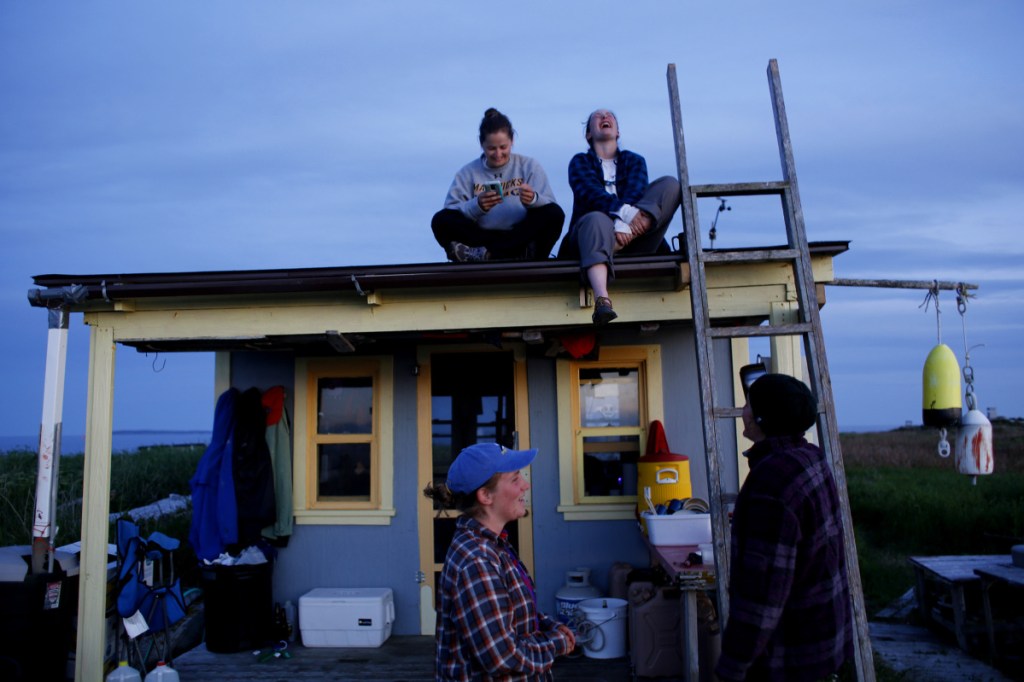

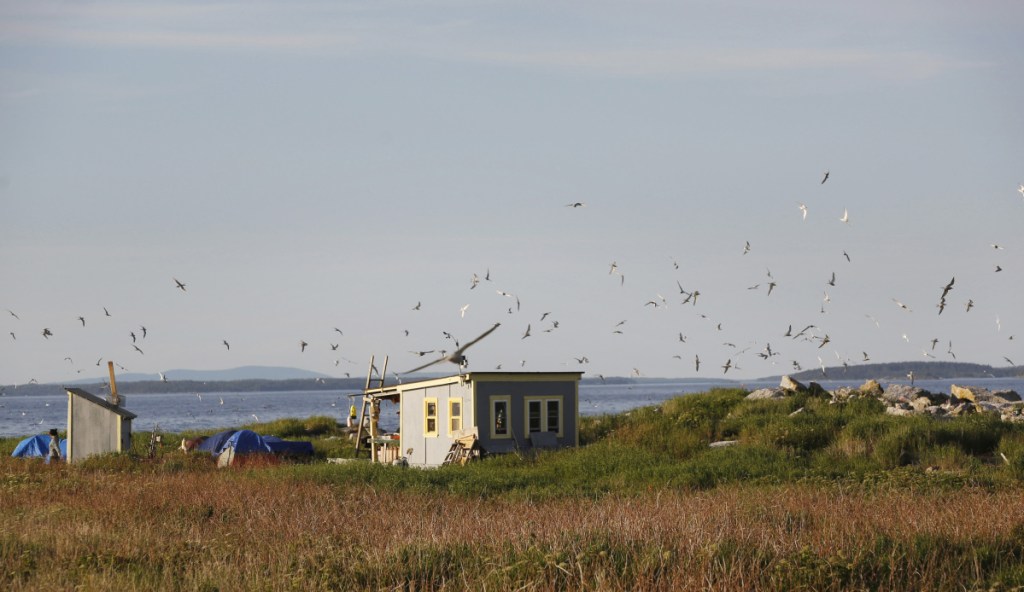

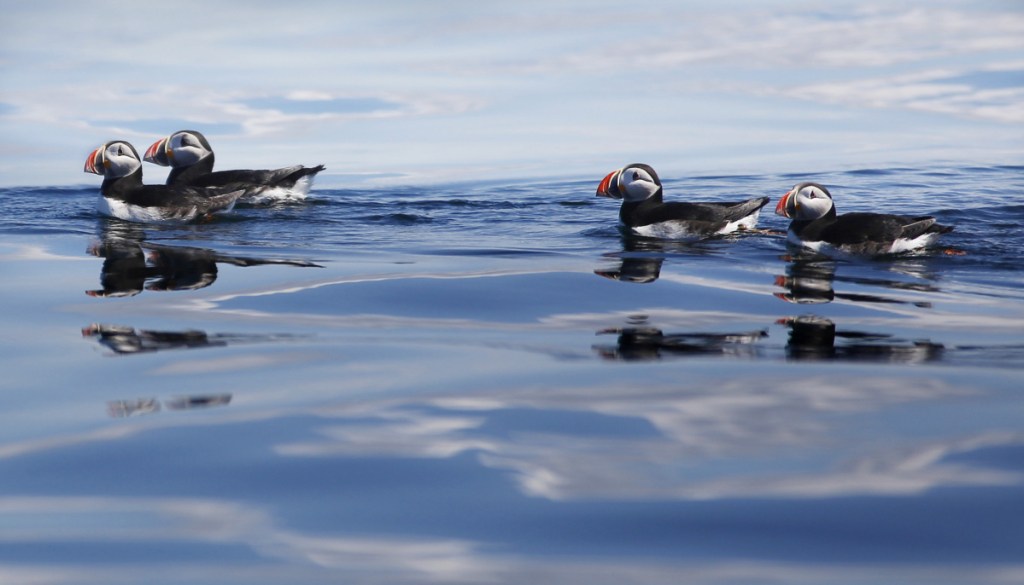



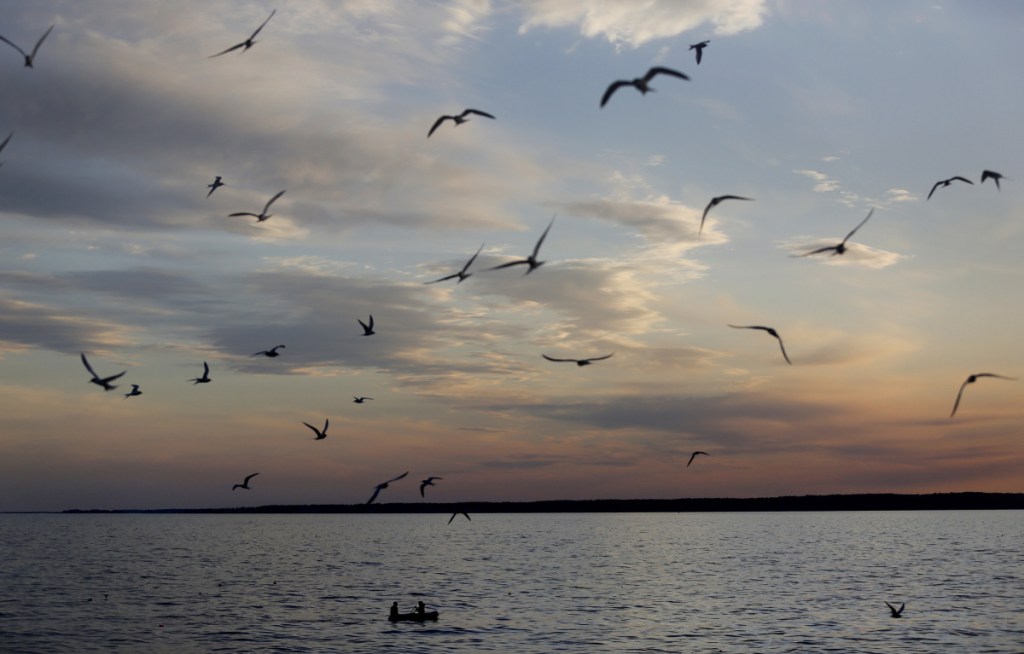
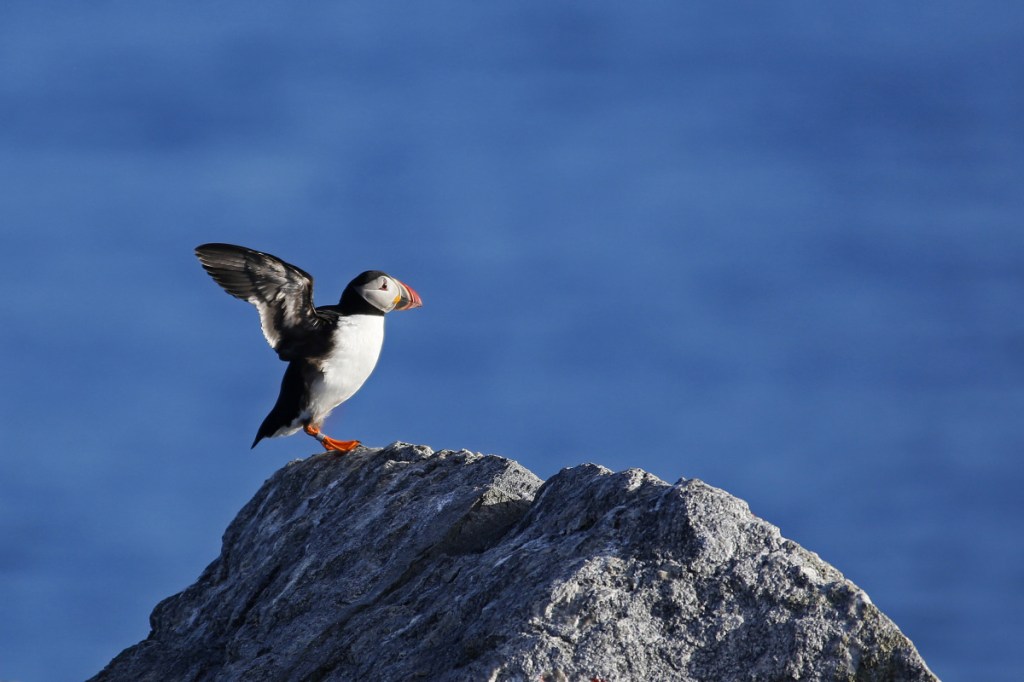


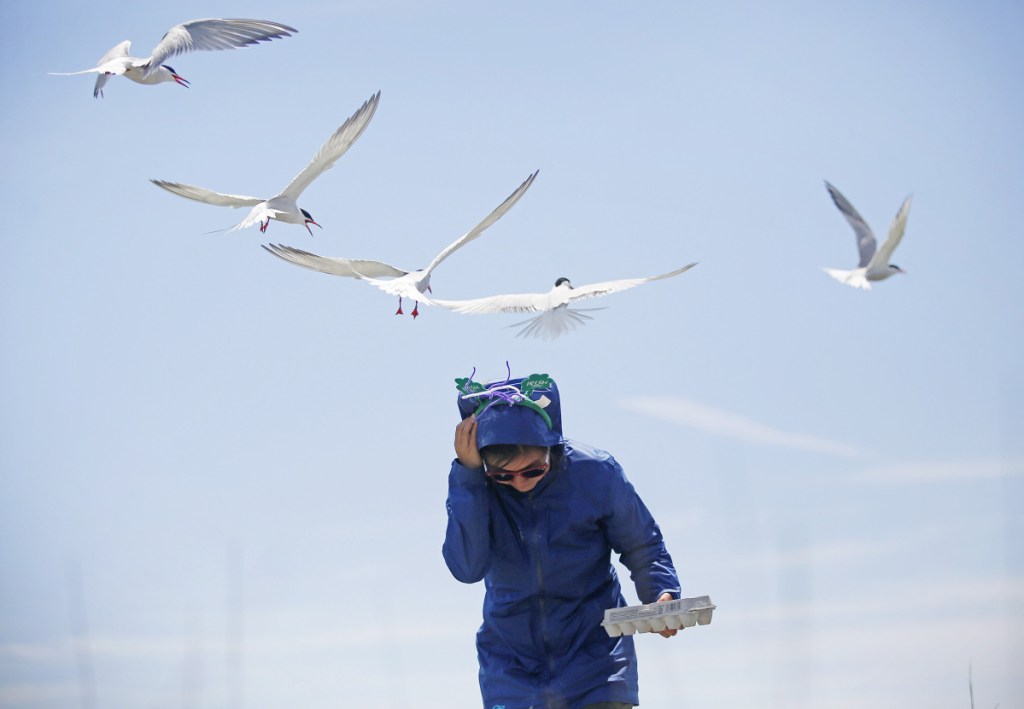
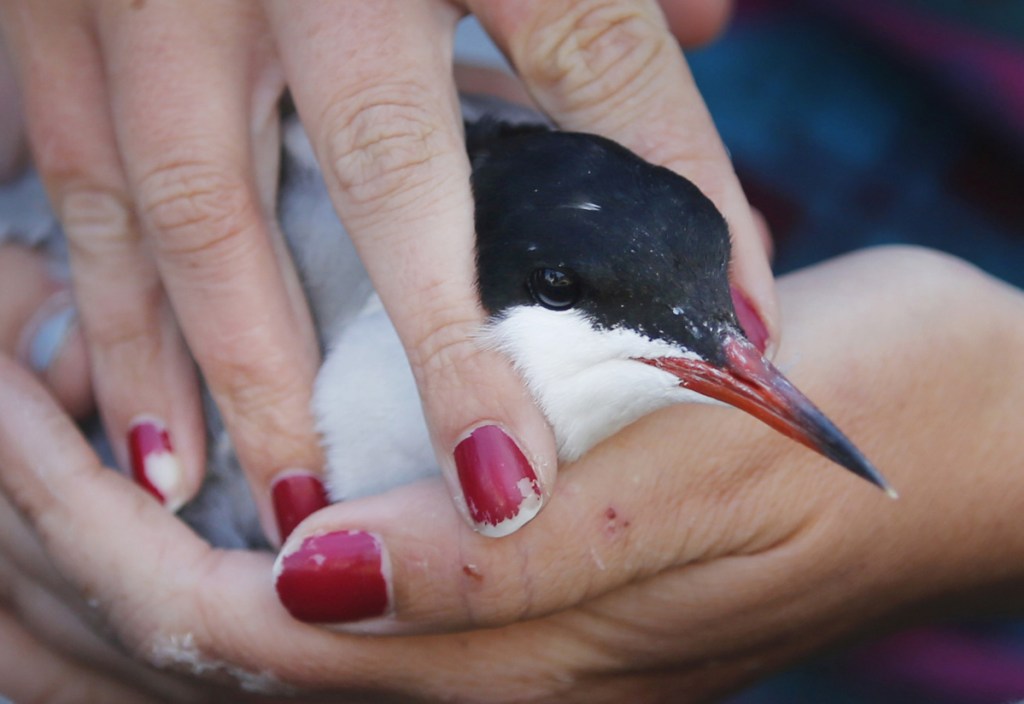
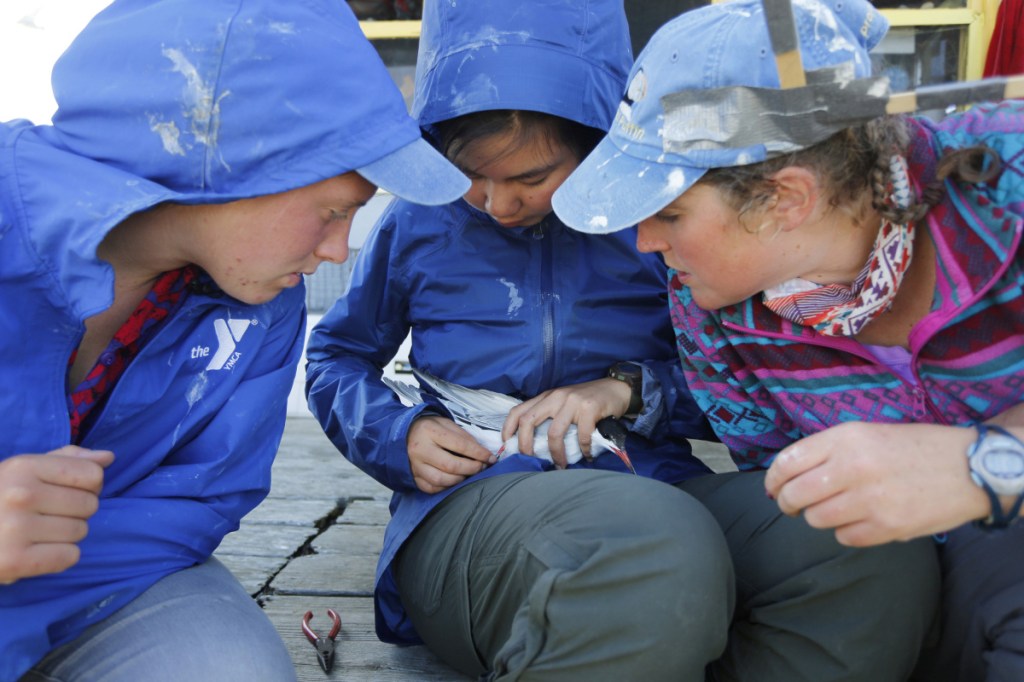
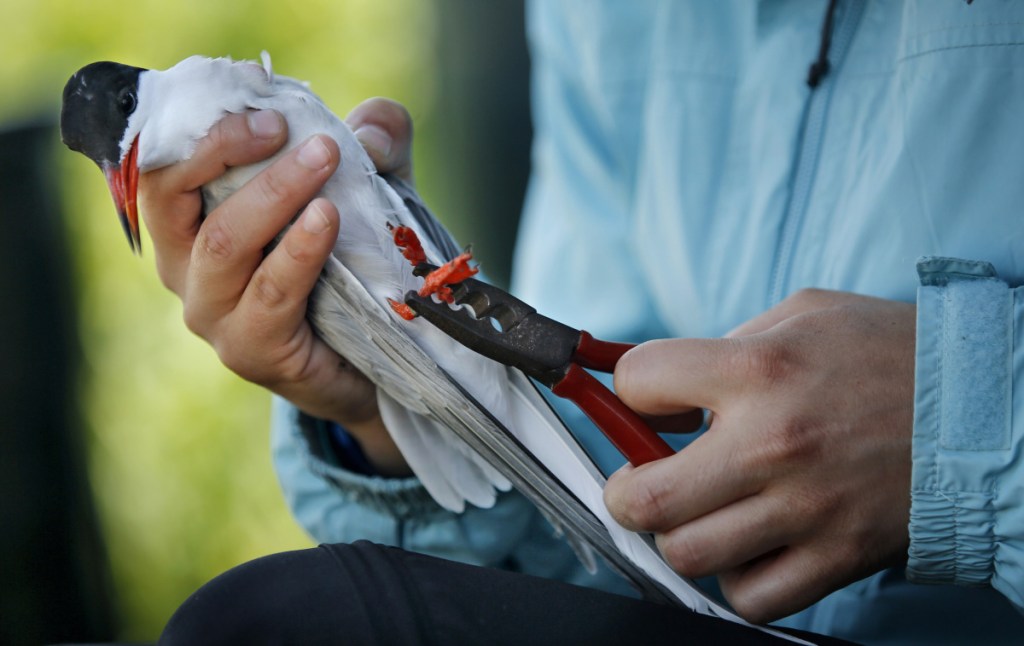


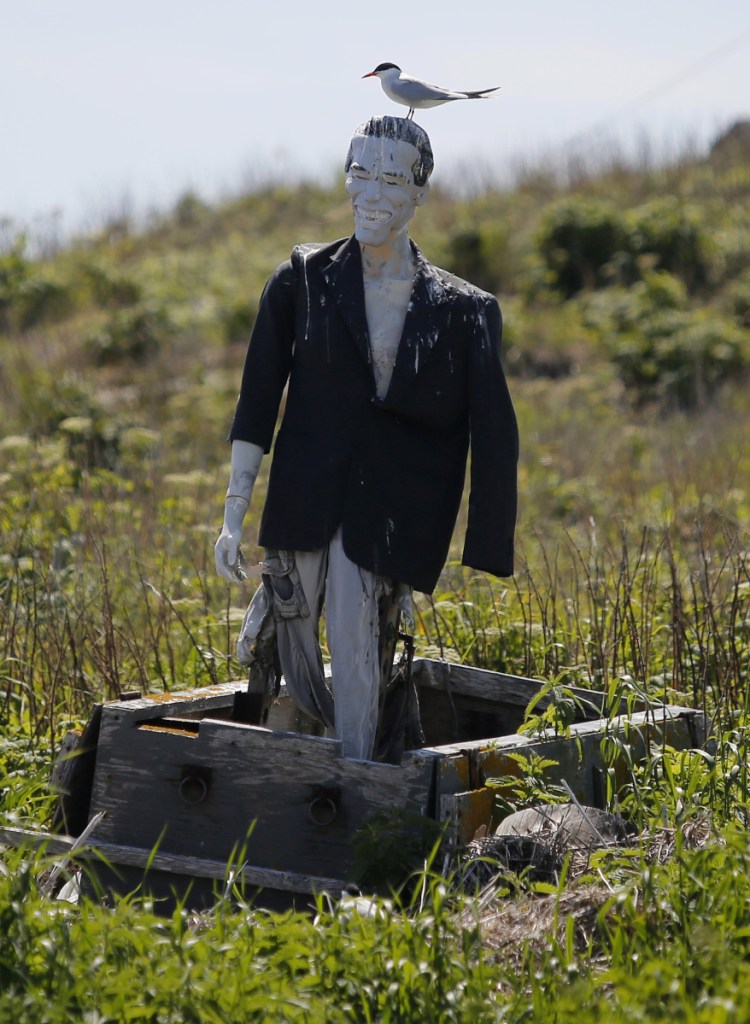

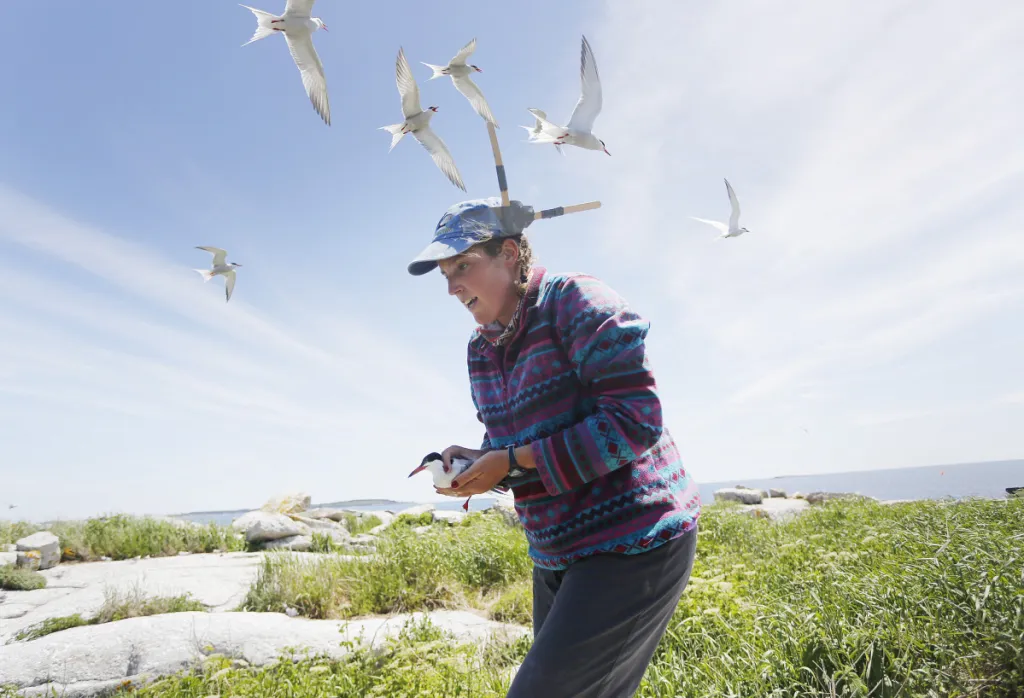
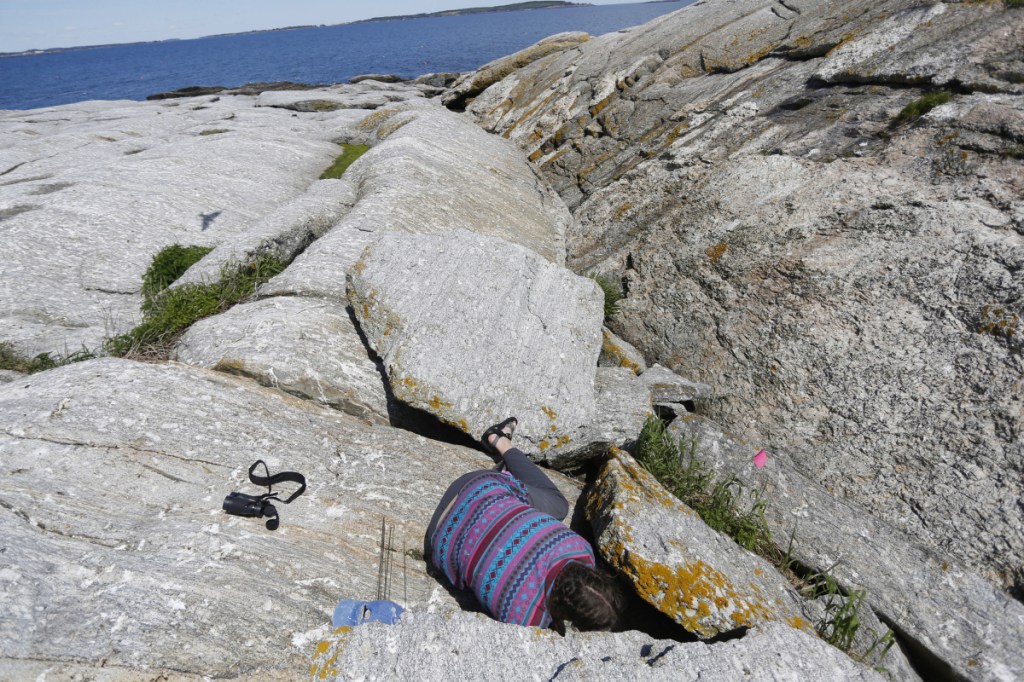
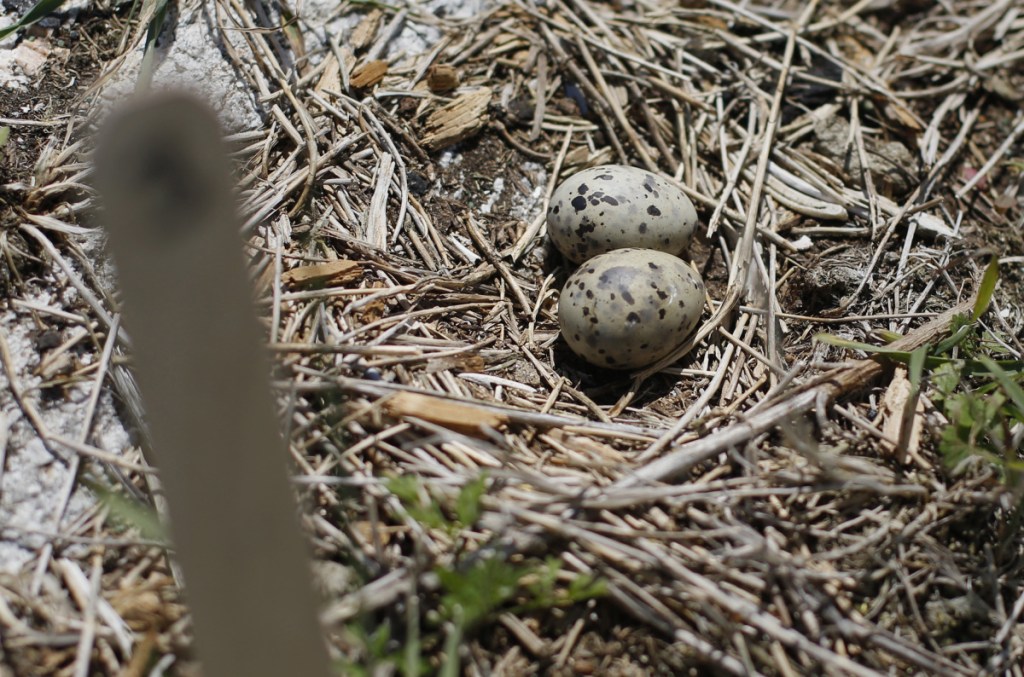
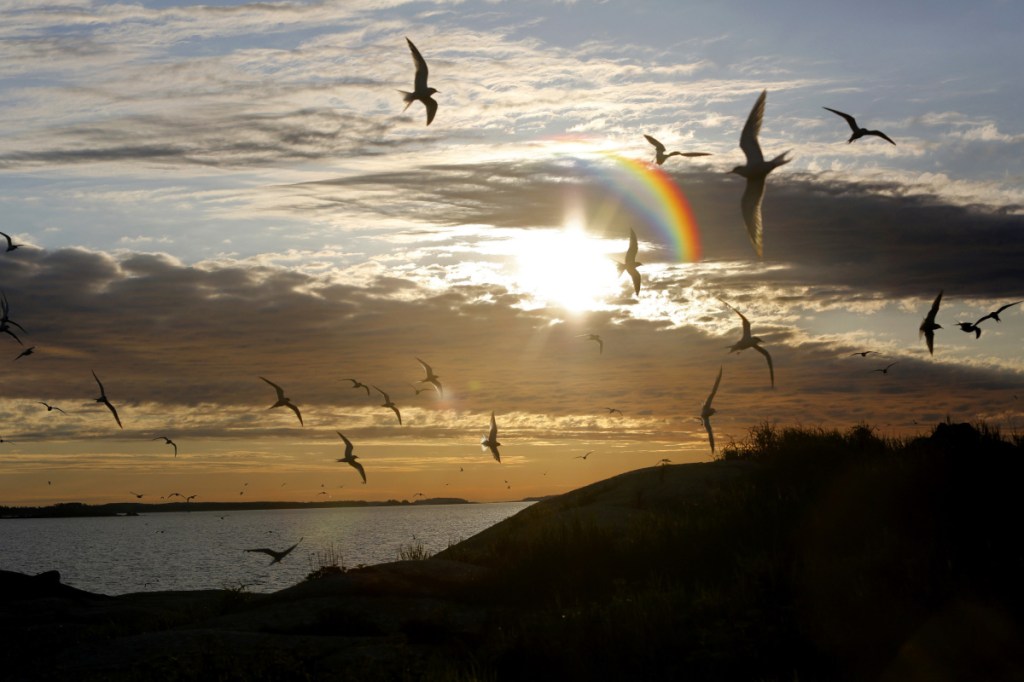

Success. Please wait for the page to reload. If the page does not reload within 5 seconds, please refresh the page.
Enter your email and password to access comments.
Hi, to comment on stories you must . This profile is in addition to your subscription and website login.
Already have a commenting profile? .
Invalid username/password.
Please check your email to confirm and complete your registration.
Only subscribers are eligible to post comments. Please subscribe or login first for digital access. Here’s why.
Use the form below to reset your password. When you've submitted your account email, we will send an email with a reset code.